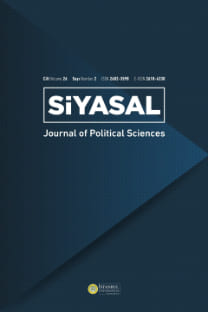İŞ SÜREKLİLİĞİ ORGANİZASYONU
Günümüzde gerek özel ve gerekse kamu sektöründe faaliyet gösteren kuruluşlar çeşitli risklere maruz kalmakta ve bunun sonucu olarak da faaliyetlerinde veya iş süreçlerinde kesinti yaşayabilmektedirler. Bu riskler deprem, fırtına, sel gibi doğal afetler sonucu oluşabileceği gibi; insan hatalarından, sabotajlardan, güç kesintilerinden veya dışarıdan gelebilecek etkiler sonucu (bilgisayar virüsü veya siber terörizm gibi) da oluşabilmektedir. Şirketlerin bu tür risklere karşı önceden hazırlıklı olmadıkları sürece varlıklarını sürdürebilmeleri imkansız hale gelmektedir. İş Sürekliliği Yönetimi yapısı ve konumu gereği insanı odağına yerleştirir. Bu makalede İş Sürekliliği yönetimini gerçekleştirecek olan İş Sürekliliği organizasyonun konumu, ortaya çıkış şekli, rolü ve sorumlulukları sektörel farklılıklar ile birleştirilerek tartışılmaktadır.
Anahtar Kelimeler:
İş Sürekliliği Yönetimi, Sektör, Kültür, Marka, Model
Today, both the private and public sector organizations are exposed to a variety of risks and outages or downtimes so they suffer from their activities or business processes These risks may occur as a result of natural disasters, human error, sabotages, power outages, earthquake, storm, flood, they can also likely to be composed from outside influences (such as computer virus or cyber terrorism). Unless they are prepared for these types incidents, companies are to survive and advance against risks is becoming impossible. Business Continuity Management places people at the centre of BCMS. This article discusses Business Continuity Management organization that will carry out his/her role and responsibilities in a corporate/enterprise. The case of this topic and the purpose of the overall assessment of the situation is to determine the future of this discipline via sectoral differences, culture, in geographical regions (i.e Turkey, and Global).
Keywords:
Business Continuity Management, Industry, Culture, Brand, Model,
___
● ● Global Seismic Hazard, http://www.seismo.ethz.ch/static/GSHAP/ ● ● TRUSCOTT, Jim, Dancing with the Tiger: The Art of Business Crisis Leadership, OAM, 2012. ●● ISO 22301 Societal Security — Business Continuity Management Systems — Requirements. ●
● ROWLEY, Jennifer, “The Wisdom Hierarchy: Representations of the DIKW Hierarchy”, Journal of Information Science, 33 (2), 2007, ss. 163–180. ●
● http://www.bsigroup.com/en-GB/about-bsi/media-centre/press-releases/2003/6/ Financial-Institutions-ignore-threat-to-Information-Security-/ ●
● http://www.bilgiguvenligi.gov.tr/is-surekliligi/risklere-hazirlikli-olmak-icin-issurekliligi-yonetimi.html ● ● KNIGHT, Rory F., PRETTY, Deborah, The Impact of Catasrophes on Shareholder Value (Report), Templeton College, University of Oxford, 1996. ●
● Security Executive Council Report, 2012. https://www.securityexecutivecouncil. com ●
● AL HOUR, Abdullah, Business Continuity Management Governance Models, MBCI, September 2011. ●
● ISO 22301 Societal Security — Business Continuity Management Systems — Guidance ●
● LEHAR, Steve, The Function of Conscious Experience: An Analogical Paradigm of Perception and Behavior, Consciousness and Cognition, 2000. ●
● TIPTON, Harold F., KRAUSE, Micki (Eds.), Information Security Management Handbook, Sixth Edition, Domain VI Business Continuity Planning and Disaster Recovery Planning, Auerbach Publications, 2006.
- ISSN: 1303-1260
- Yayın Aralığı: Yılda 2 Sayı
- Yayıncı: İstanbul Üniversitesi
